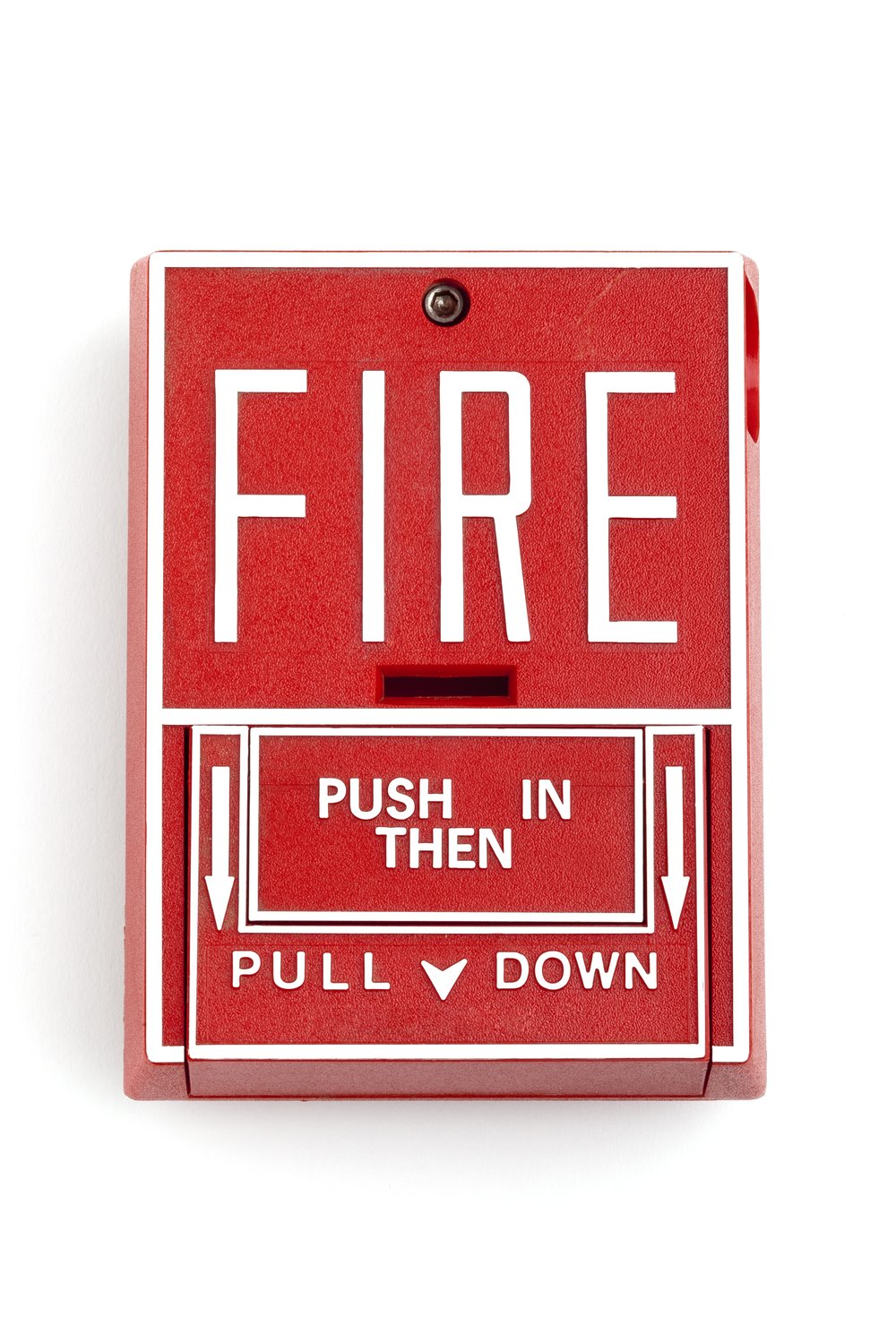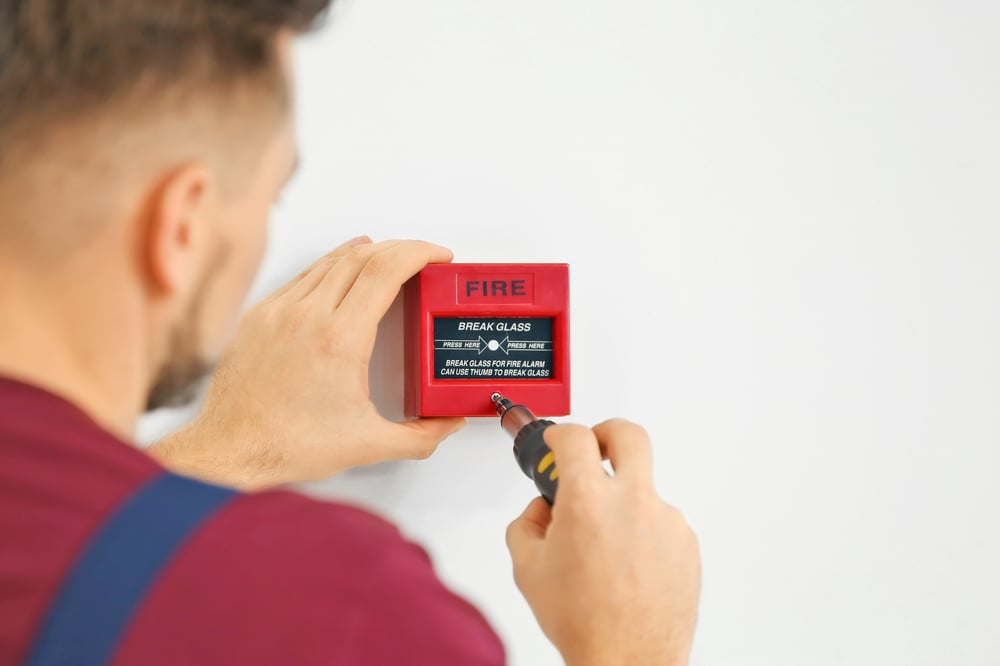Temporal Fire Alarm System Design
Our Temporal Fire Alarm System are designed to ensure optimal audibility regardless of outdoor noises.
In an emergency situation you need a reliable fire alarm system. Our Temporal 3 Alarm Systems are designed with this convenience in mind.
All of our systems are designed with longevity in mind, saving you maintenance costs down the line.

Temporal Fire Alarm System design is a typical design of a fire alarm that uses a unique three pulsed sound to alert the occupants of a building. It is programmed differently from conventional fire alarm systems that use a constant sound.
It was found that the conventional systems are not effective with their sound levels. They were notorious of inaudibility, disruptions and tampered voice signals hence Chicago building codes adopted the T3.
On 1 July 1996, the American National Standard (ANSI) has adopted the Temporal Three Alarm Signal as the new fire alarm system design in all buildings built thereafter. This is the design followed by many countries around the world due to its convenient pulsed patterns of notifying occupants of a building about an emergency.
Buildings that were using conventional fire alarm systems are urged to convert to the modern Temporal System Design. There are many benefits of using T3 as the Audible Emergency Evacuation Signal. Temporal Signal is in compliance with the ANSI S3.41 and ISO 8201. So, rest assured that you are installing an international system design in your building to safeguard your life.
Temporal Fire Alarm System is in compliance with NFPA 72 building code that enforces the application location, installation, maintenance, monitoring, testing, and inspection of fire alarm systems in the United States. Thus, all new buildings in Chicago should take cognizance of this new fire alarm system.
If your new building is designed by Nearby Engineers New York Engineers , we will ensure that it meets all fire safety regulations as stipulated by the NFPA 72 code.
The Temporal Fire Alarm System differs from conventional fire alarm systems with the way the sound signal is dispensed to building occupants. For instance, a conventional system would produce a constant sound that may be distorted or inaudible to some hearing-impaired building occupants. This, in turn, has caused inconveniences by putting others at risk of the fire emergency.
Temporal Fire Alarm design is an effective way to notify occupants of a building to evacuate the building. How is this done? Well, the design works with a pulsed audio signal that lasts for a minimum of 180 seconds. Ideally, there is a pattern of how the sound is produced.
The basic pattern is a three pulse which lasts for 0.5 +/- 0.05 seconds and then followed by 1.5 seconds of silence. This sequence repeats for over 180 seconds. Such a pattern has been proven to be effective in alerting occupants and emergency responders about an imminent fire occurrence in the building.
However, NFPA 72 emphasizes the need to isolate this alarm design from other systems to avoid confusions. Also, building occupants should be trained about this pattern so that they do not confuse it with other similar patterns that might signal other occurrences. Nearby Engineers New York Engineers technicians can undertake the training to educate your tenants about the reaction to Temporal Fire Alarm signals.

Not anyone is allowed to install fire alarm systems due to the nature of risk associated with their purpose. Fire safety regulations reinforce the need to have a certified fire technician to install fire alarms in all buildings. At Nearby EngineersNew York Engineers, we have a wealth of experience in fire protection engineering services. Our services extend to all areas across the United States and beyond the borders.
Our design, installation, and location are guided by NFPA 72 requirements.
Find hereunder special requirements stipulated by NFPA 72 and the International Building Code:
This is only a handful of requirements stipulated by the NFPA 72. Many of them can be too technical if you are no tech savvy, but Nearby Engineers New York Engineers are well rounded with all sets of requirements. We design fire alarm systems from scratch, install, and monitor them on your behalf.
Besides being mandatory to have a certified technician to install the Temporal Fire Alarm System Design, it can be overwhelmingly challenging to configure the system if you are not a tech person. The design and the installation are complex and so you need a competent technician to accomplish it for you.
When designing a Temporal Fire Alarm System, our technician takes into account the levels of protection required and enforced by NFPA 72 building code together with other authorities such as insurance agencies. The technician then details specific components and arrangements in line with the preset expectations of fire protection. What you get is an optimally efficient fire alarm system for your building.
Not only is our technician guided by the NFPA 72 but also the ISO 7240-14, which is the international standard for design, installation, service, and commissioning of fire alarm systems. This international standard was enacted in 2013 August by the ISO technical committee.
Still on the design and installation, one has to take into account the parts of the fire alarm system. At the heart of every fire alarm system lies the control panel which serves as the control unit for the entire system. It facilitates communication between the devices, occupants, and the emergency responders.
Also, there must be a power supply: 120 or 240 volts of alternating current from a commercial power utility. In case the primary power gets disrupted, a secondary power supply must be in place to ensure that the Temporal Fire Alarm System always functions uninterrupted. Fire can emerge even when electricity supply is off, and so you need a reliable power supply apart from the primary source supplied by the commercial power utility or branched circuits.
In addition to the control panel, there are initiating devices that include smoke detectors, heat detectors, pull stations, and other akin devices. They can be manually or automatically activated. These devices act as inputs to the control panel to complete the fire alarm system.
Furthermore, there is a fire alarm notification appliance that alerts the occupants about an impending fire emergency. The appliance uses the energy supplied by the fire alarm system. The methods of alert could vary from incandescent light, flashing light, bell, speaker, electronic horn, or the siren.
You are probably stunned by this comprehensive information about the installation of Temporal Fire Alarm System. To avoid such a shock, Nearby Engineers New York Engineers can hand you a competent technician who will make sure that all fire safety requirements are being taken care for. From the design to the installation and monitoring of the system, our technicians are well rounded to help you.
Audibility of the fire alarm system is vital in a fire emergency. Temporal Fire Alarm Design achieves that by using a three pulse audio to alert occupants of a building. As already described above, it is a three pulse with sounds lasting 0.5 seconds and a silence of 1.5 seconds for a minimum of 180 seconds.
Studies found out that Temporal 3 Fire Alarm Systems are effective for senior citizens and those with hearing problems compared to conventional alarm systems. This has led to the adoption of these systems as standard to replace the conventional fire alarm systems in all buildings.
Moreover, T3 Fire Systems are not limited to fire alerts only but other emergency communications such as weather and chemicals. The systems integrate well with smoke, gas and heat detectors. Nearby Engineers New York Engineers can configure all these needed settings to make your fire alarm system functional in a blink of an eye.
NFPA 72 stipulates clearly that Temporal Fire Alarm Systems should not be integrated with other communication systems to avoid compromising their function. However, it goes back to the overall functionality of these systems compared with Voice-Evac Systems. Voice-Evac and T3 systems do not really overlap completely in functionality because Voice-Evac is mainly for partial evacuation whereas T3 is for complete evacuation. If need be, our engineers can install both of them to your request provided we do not tamper with fire safety regulations and requirements.
Voice-Evac systems are prerecorded in real time to give the occupants to relocate or evacuate to a different region within the same premises. This is termed as partial evacuation. There is an audio amplifier that connects to speakers placed on each floor in a large building to give voice commands. You may combine Temporal Alarm Systems with Voice-Evac as supplements.
To comply with NFPA 72 building code in Chicago, consider our Temporal Fire Alarm Systems. Nearby Engineers New York Engineers designs, installs and monitors these modern fire alarm systems to ensure that they always function optimally without putting occupants at risk of a fire emergency. Our technicians are well-versed with all the fire safety requirements as stipulated by the National Fire Protection Association in the United States.
Many clients around Chicago and New York can attest to our unmatched Temporal Fire Alarm Systems. We are experts in fire protection engineering services and have been designing these systems for many years. Our technicians ensure that the systems are perfectly designed, installed and maintained. Fire alarm designs and installations are not for amateurs as they carry the risk of human lives and property values.
To ensure that we design the best system, we will assess your building upon meeting with you and take the architectural plan of your building in a quest to design a full coverage network of alarms. We are well equipped with smoke, heat and gas detectors, and so integrating them with the Temporal T3 Alarm Systems will be an absolute breeze.